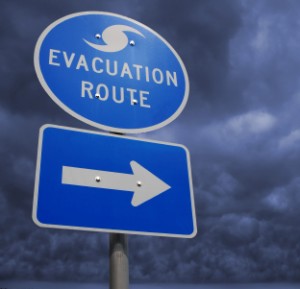
It is the eighth anniversary of the World Trade Center terrorist attacks. I am sure everyone remembers the details of that day all too well; yet you may not be aware that after the attacks, hundreds of older and disabled residents living in the high rise apartment buildings of the Intercontinental Plaza near Ground Zero were abandoned in their homes for up to 10 days. Even though the City of New York brought in buses to take all the residents to safer locations, many older residents who tried to get on the buses were pushed aside. Others couldn’t make it down the flights of stairs (the elevators were out because the electricity was cut off), while others didn’t want to leave their spouses or loved ones who were too ill to be moved. For days, first responders and emergency organizations such as the American Red Cross remained unaware of the situation. Finally, in response to rising concern among neighbors, families, and health workers, the Red Cross sent an ad hoc team door to door, checking all the apartments and making sure that everyone left behind had been evacuated and given proper medical attention. It is still amazing to me that in 2001, there were no targeted procedures in place for first responders and the American Red Cross that would ensure that older adults and other vulnerable people received the emergency services they required during a disaster.
The 9/11 aftermath revealed that we need to develop emergency plans more appropriate for our vulnerable populations. However, by 2005, when Hurricane Katrina devastated New Orleans, little had changed. The majority of the people left behind in flooded New Orleans were old and/or vulnerable, and the majority of deaths were of older people. The CDC determined that while the elderly accounted for only 15 percent of New Orleans’ 2005 population, they accounted for 70 percent of the deaths from Hurricane Katrina. At least 139 storm-related fatalities were reported from nursing homes. Do we need another emergency to remind us how ill prepared we are?

It seems that providing care and services for our older population is rarely even a second thought in our society: Our health care professionals receive little or no training in geriatrics even though the majority of patients are older; and in emergency situations it is the older and disabled people who need the most assistance, yet they are the ones left behind to fend for themselves. Take for example the heat wave that gripped much of Europe in 2003. Families vacated cities such as Paris for the month of August, when one of the worst heat waves on record struck. The heat killed thousands of older relatives left behind in city apartments without adequate cooling capabilities. Or perhaps you remember the photos of the 2004 tsunami that ravaged many countries in Southeast Asia, showing crowds of people grabbing bags of rice while older people sat on the side, unable to push their way to the trucks.
It also seems to me that society cares more for its pets than it does for its older citizens. Within 24 hours after the World Trade Center attacks, animal rescue teams were on the scene with their veterinarian mobile units rescuing pets from the abandoned apartments. In the aftermath of Katrina, we all watched, glued to the television, as motor boats of volunteers cruised the flooded streets rescuing pets from roofs and porches. If we can mobilize to rescue and provide care for pets, then we can do it for our older loved ones as well. The Humane Society has a “Disaster Response Program Coordinator” who leads national disaster response teams and coordinates disaster response planning for pets and farm animals. Emergency organizations should have similar positions focusing on older and disabled people.
In an effort to improve emergency responsiveness for older people in nursing homes, the Hartford Foundation provided a grant to the Florida Healthcare Association, which brought together eight Southeastern states to improve how they care for their frail and elderly citizens during a major disaster. Leadership from the state emergency command centers and long term care (LTC) organizations in Florida, Louisiana, Mississippi, Alabama, Texas, Georgia, Virginia, and North Carolina met in May 2007 to find ways to improve how LTC needs are incorporated into disaster planning. Federal level representatives from the Federal Emergency Management Agency (FEMA), Centers for Medicare and Medicaid Services (CMS), and the Department of Health and Human Services (HHS) also participated, along with representatives from AARP. Information on the new set of national emergency preparedness tools for nursing homes can be found on the Florida Healthcare Association website.
The Hartford Foundation also provided a grant to the Council of Senior Centers and Services (CSCS) in New York City to develop the Emergency Preparedness Guide for Aging Service Providers. This Guide provides an overview of emergency preparedness and what aging service providers need to do to prepare the agency and its staff, clients, and volunteers to cope with disasters and emergencies. To order a copy of the guide go to the CSCS website.
On the eighth anniversary of 9/11, I implore you to think about emergency preparedness for older and vulnerable people. What is your organization doing to promote adequate care for older people? Hospitals, assisted living facilities, nursing homes, and home care agencies, as well as all first responders and federal emergency agencies, should have adequate and appropriate emergency plans to ensure that older and disabled people are not left behind. And while we’re at it, what about you? What emergency planning have you done, for yourself, your family, and your older loved ones? Don’t make it a second thought--there might not be time for that.
